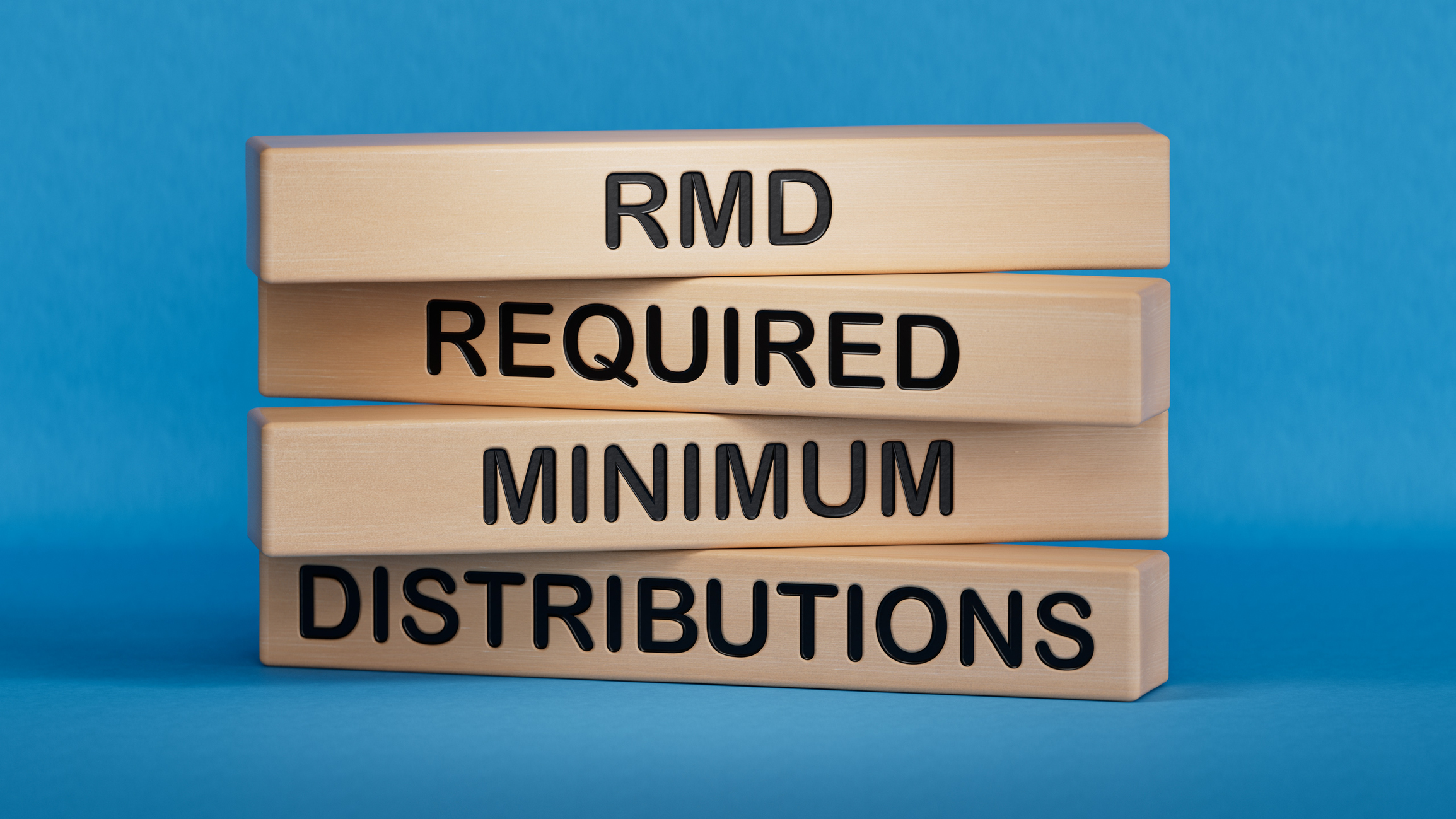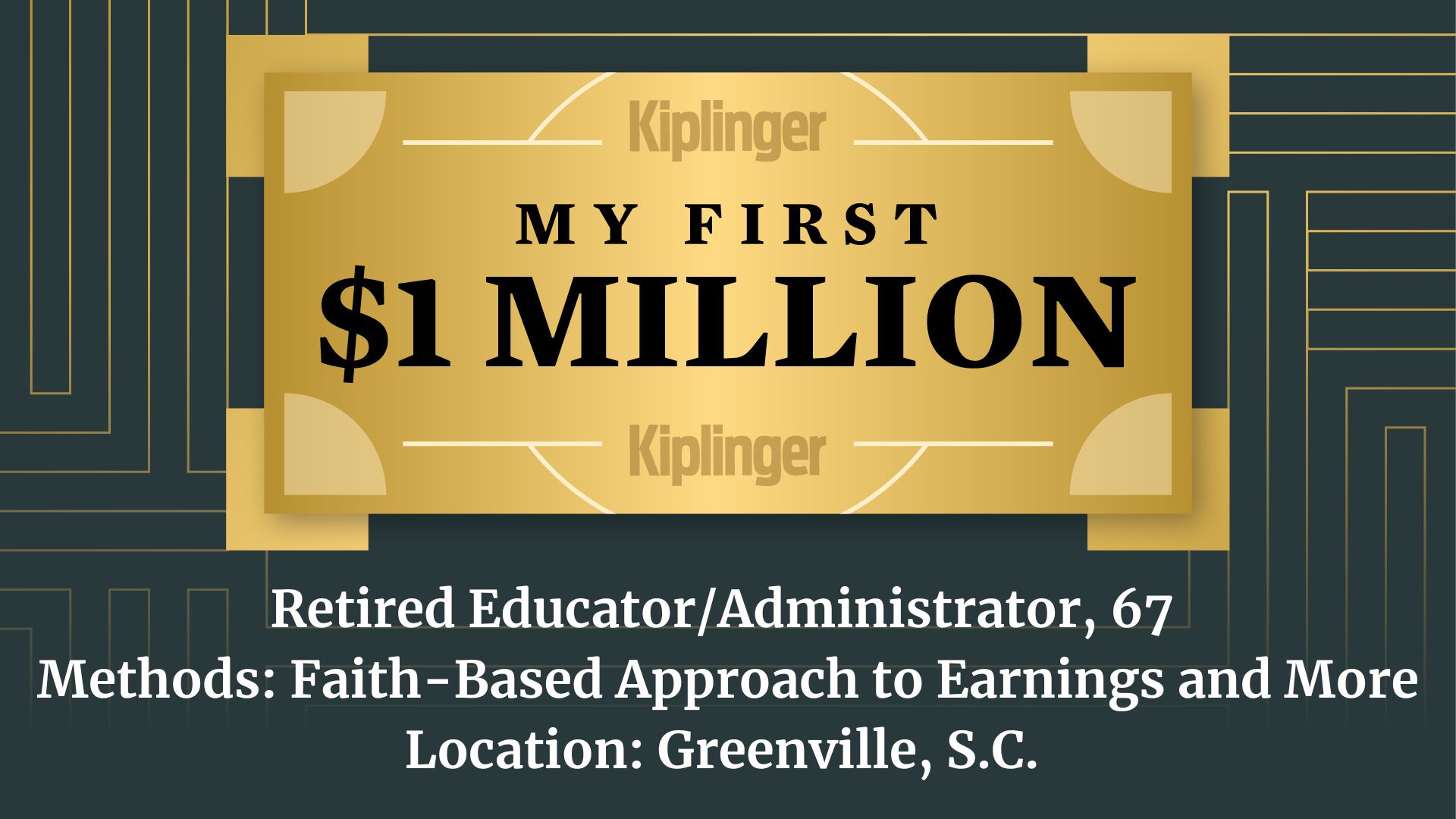Three Rules for When You Want to Make a Risky Investment
There's a time and a place for taking on risky investments. Don't even consider speculative bets before you've built a strong financial foundation.

When you’re working to build your wealth, there may be no louder siren song than the promise of huge returns — if you just place the right bet at the right time.
The idea that you can find the one investment that will secure your financial future is really tempting to most people, because it means circumventing the much more reliable but much more boring route of looking for modest returns without taking on more risk than you absolutely need to over a long period of time.
And of course, there’s FOMO: the fear that you might miss out on the one great opportunity that would slingshot you forward toward the life (and bank balance) that you’re trying to achieve.
From just $107.88 $24.99 for Kiplinger Personal Finance
Be a smarter, better informed investor.

Sign up for Kiplinger’s Free Newsletters
Profit and prosper with the best of expert advice on investing, taxes, retirement, personal finance and more - straight to your e-mail.
Profit and prosper with the best of expert advice - straight to your e-mail.
The problem is that you cannot give yourself a shot at earning outsized returns without also taking on outsized risk at the same time. That’s the real issue with speculative bets or concentrated stock positions. It’s not that they never work out or are always foolish investments to take on — it’s that you may not be able to afford the big downside risk that can easily show up instead.
As a financial planner, I do believe there’s a time and a place for making riskier investment decisions. But there are ground rules you need to follow, and one huge component of your financial plan that you need to have in place first.
How to position yourself to successfully take on more investment risk
Speculative investments, while potentially lucrative, come with higher risks. These investments might include individual stocks, real estate, alternative investments or private equity deals that promise high returns but also carry a significant risk of loss.
But if you want to stretch out and take a risk with your finances, you better make sure you have a strong, stable core to support you first. If you take the risk without a solid foundation beneath you, you may not be able to recover from realizing the downside — which could be devastating to your long-term financial well-being.
Before you start dabbling in more speculative areas of the market, focus on contributing a strong percentage of your income to long-term investments within a globally diversified portfolio made of low-cost mutual funds and exchange-traded funds (ETFs).
Notice this is a two-part task, and the first is simply saving. Way before you start asking things like “how can I earn a better return,” you should be asking “how can I increase my savings rate? How can I get more of my income flowing into long-term investments to reliably, sustainably grow wealth for the future?”
A high savings rate largely frees you from the need to take outsized risks in the market. You don’t have to rely on a certain rate of return to make up for a lack of savings — you’re supplying the principal that can then go to work for you earning compounding returns, so long as you give it the time to do so uninterrupted.
Making your primary investment focus a globally diversified portfolio that keeps an eye on costs means you are spreading your investments across various asset classes and geographical locations to mitigate a variety of risks inherent to all investing. And by creating and sustaining a strong savings habit, regularly contributing cash to your portfolio through a system like dollar-cost averaging, you lessen the impact of volatility and market fluctuations on your long-term results.
Here are three rules for making speculative bets in the market:
Rule #1: Create a strong core.
Establishing this core ensures that you have a stable and systematic approach to growing your wealth, minimizing the risks associated with market volatility — and also giving yourself the freedom to explore other, more speculative investment opportunities without putting your financial stability in jeopardy.
You should be able to check the following boxes before even considering a speculative or high-risk investment:
- You have a solid financial core in place. Your primary investment strategy is a globally diversified, low-cost portfolio that you can continue to tend to as you explore a few riskier investments on the side. Any speculative investment you want to make should be in addition to the core portfolio you have. If a single bet you want to place will prevent you from contributing to your main portfolio, it may not be the best financial move to make.
- You have financial planning basics in place. This means you don’t have any existing high-interest debt; you have a full emergency fund; you are on track to meet your highest-priority goals already; you keep a gap between your spending and your earnings so that you have a steady flow of excess cash flow that you typically devote to savings.
- You understand the additional risk that you are taking. One of the most important steps we want to walk clients through when they take on high-risk investments is simply acknowledging what they are doing: that they’re placing a bet. We believe markets are highly efficient and that, in general, no one individual knows something the market at large does not. Any promise of a high return comes hand in hand with high risk, and it’s critical.
Getting into something speculative is more like gambling than investing. Yes, it is possible to win big — but if it was actually realistic for most investors to predict the market or find a secret strategy to guarantee big returns, there would be no financial advisers out there, and a whole lot more retail investors would be a lot richer.
You cannot predict or time the market, or reliably find a way to get rich quick with no risk — and that should not be your expectation when investing speculatively. Acknowledge you’re taking a risk, know that you might pay the price, and make your decision from there.
Rule #2: Understand not just your risk tolerance, but your risk capacity.
Just about anyone with a baseline familiarity with investing understands the idea of risk tolerance. It’s a measure of how likely it is you will keep calm and carry on should the market look like it’s melting down.
Some folks can invest very aggressively and not be bothered when the market drops; they are happy to sit cool and wait out short-term volatility because they have an expectation of long-term gain. Other people simply cannot stomach the emotional turmoil that comes with seeing their net worth take a nosedive and therefore should not be invested so aggressively that they will panic and jump out of the market in the face of a major downturn.
Understanding your risk tolerance is critical — but it does not tell you the full story about how much risk to take. It can inform you on what you can emotionally handle, but it does not tell you what you can literally afford. You need to understand risk capacity for that.
Risk capacity is your actual ability to absorb the cost of a realized risk. It doesn’t matter if your risk tolerance is sky-high if you don’t have a financial foundation that can allow you to literally lose money and still be OK, still be on track to achieve your long-term goals and still live your life as you want to do so in the present.
To get a sense of your risk capacity, you need to ask questions like:
- Can I afford to lose this money? Only invest money you can afford to lose without jeopardizing your financial stability.
- What percentage of my net worth am I risking? Avoid investing more than a small portion of your net worth in speculative ventures to prevent significant financial setbacks. We typically recommend allowing no more than 5% of your liquid net worth to be tied up in a single position.
- What is the expectation for getting my money back, and can I afford to handle illiquidity? Different investments provide different degrees of liquidity, as well as different timelines. Is your priority to receive income from the investment, or are you expecting your capital back (plus return) in a lump sum at a liquidity event? These are two very, very different things, so you need to understand your true needs and priorities and ensure the investment you’re thinking of making actually aligns with those.
Rule #3: Eliminate (or at least recognize) where bias shows up.
There are a lot of mental, thinking errors that show up when we start talking to clients about higher-risk or more speculative investments. A quick rundown of the top hits:
- Survivorship bias. Anecdotes and headlines highlight the success stories. There aren’t a lot of people running around and bragging about all the times they failed or got it wrong. The focus on the big wins distorts the reality around them, that they were actually the minority of cases and may or may not have made up for all the losses that came before. Survivorship bias gives us a distorted sense of the likelihood of success.
- Hindsight bias. Everything seems obvious and logical when you have the advantage of standing in the present and looking back at the past. The reality is much more complicated and usually nonlinear.
- Recency bias. People can give more importance to the most recent thing that happened or that they remember. With financial planning and investing, we see this broadly manifest as a general sentiment that if things are pretty good today, they will continue to be pretty good tomorrow (or the opposite). This leads to making decisions based on short-term emotion rather than long-term perspective.
- Clustering illusion. This happens when you see patterns that aren’t there, when you mistake randomness or chance as something far more organized or likely to occur than it actually is. It is easy to convince yourself that a certain investment is a sure bet if you’re placing similar events or streaks together to conclude that the next logical outcome is inevitable.
To help you avoid falling into one of these biases — which will stop you from seeing the complete picture around any given issue, not just investments — you can try a few different tactics to help clarify your thinking and therefore your decision-making.
Consider writing down your assumptions to evaluate risk
A good starting point is to write out all the assumptions you have that must turn out to be true in order for you to have a successful outcome. The more assumptions you make, the riskier something likely is.
It’s easy to recount all the great things about a potential opportunity — but make sure you ask questions about the downsides, too. What might you be missing about this? Where do you have a lack of knowledge or certainty? Consult an expert who can help you uncover blind spots, too. It’s one thing to identify something you don’t know. It’s very hard to pinpoint the exact thing you don’t know you don’t know without outside perspectives and expertise.
Finally, make sure you are clear-sighted about the roles luck, chance and randomness play in all our lives. I once spoke with a client who, as a college student, got very into stock picking and day trading. He told me, “It was a really great experience. I lost everything!”
It was a great experience because he realized that there was a lot he didn’t know, that investing is not easy or simple and that an efficient market makes it very hard to accurately predict which stocks will be winners vs losers. If it were so easy, everyone would be doing this.
Had this investor gotten lucky with outsized returns on his gambles, he would have thought he had a special skill that he could replicate. Instead, he learned a critical lesson very early on: The real danger is when early successes in speculative investments lead to overconfidence and a lack of respect for the role of luck, which can result in much more significant losses down the line when you’ve actually built up a lot to lose.
Use a secure set of guardrails to take a little more risk, safely
For most people, the idea of speculative investing should come into play only after years of consistent effort in building a strong financial foundation. And even if you want to take more risk with your investments, these kinds of bets should never replace the stability and reliability of your core portfolio.
Your primary goal should always be to grow your wealth steadily and securely, without taking on unnecessary risk. Ensure you have a strong financial foundation before venturing into speculative territory and always be prepared for the possibility of losses. By following these guidelines, you can explore speculative investments responsibly and with greater confidence.
Eric Roberge, CFP®, is the founder of Beyond Your Hammock, a Boston financial planning firm that provides wealth management strategies to couples and young families. To jumpstart your financial planning journey, get a free copy of Eric's ebook on 5 Strategies to Optimize Your Finances.
Related Content
- Five Building Blocks for a Sound Investment Strategy
- Want to Get Rich and Stay Rich? Avoid 10 Investing Mistakes
- Five Steps to a Stronger Financial Plan
- Mutual Funds Reality Check: Are You Really Diversified?
- Three Investments That Put Your Money to Work With Less Risk
Profit and prosper with the best of Kiplinger's advice on investing, taxes, retirement, personal finance and much more. Delivered daily. Enter your email in the box and click Sign Me Up.

Eric Roberge, CFP®, is the founder of Beyond Your Hammock, a financial planning firm working in Boston, Massachusetts and virtually across the country. BYH specializes in helping professionals in their 30s and 40s use their money as a tool to enjoy life today while planning responsibly for tomorrow.
Eric has been named one of Investopedia's Top 100 most influential financial advisers since 2017 and is a member of Investment News' 40 Under 40 class of 2016 and Think Advisor's Luminaries class of 2021.
-
 New RMD Rules: Can You Pass This Retirement Distributions Tax Quiz?
New RMD Rules: Can You Pass This Retirement Distributions Tax Quiz?Quiz Take our RMD quiz to test your retirement tax knowledge. Learn about RMD rules, IRS deadlines, and tax penalties that could shrink your savings.
-
 I'm 61 and need $50,000 for home repairs. Should I borrow given today's rates or take a withdrawal from my $950,000 401(k)?
I'm 61 and need $50,000 for home repairs. Should I borrow given today's rates or take a withdrawal from my $950,000 401(k)?We asked financial experts for advice.
-
 I'm 61 and need $50,000 for home repairs. Should I borrow given today's rates or take a withdrawal from my $950,000 401(k)?
I'm 61 and need $50,000 for home repairs. Should I borrow given today's rates or take a withdrawal from my $950,000 401(k)?We asked financial experts for advice.
-
 Headed for the Retirement Red Zone? This Eight-Step Game Plan Helps to Avoid Fumbles
Headed for the Retirement Red Zone? This Eight-Step Game Plan Helps to Avoid FumblesThese strategies help safeguard your nest egg and ensure long-term financial success during the five years before retirement and the five years after.
-
 I'm a Financial Planner: This Is How You Can Get Started With RMDs
I'm a Financial Planner: This Is How You Can Get Started With RMDsThe IRS will come knocking for its share of your tax-deferred retirement savings when you hit 73, but planning ahead for RMDs will ensure you're ready.
-
 How Will You Replace Your Paycheck in Retirement? A Financial Adviser's Tips on Income Planning
How Will You Replace Your Paycheck in Retirement? A Financial Adviser's Tips on Income PlanningBills don't stop once you retire — and you can't expect your Social Security checks to cover them all. Don't risk running out of money. Instead, make a plan.
-
 The Mulligan Rule of Retirement — Seven Mistakes You Can Fix
The Mulligan Rule of Retirement — Seven Mistakes You Can FixUse the Mulligan Rule to undo these seven costly retirement errors. While you can’t go back in time, some retirement choices allow for a “correction shot.”
-
 My First $1 Million: Retired Educator/Administrator, 67, Greenville, S.C.
My First $1 Million: Retired Educator/Administrator, 67, Greenville, S.C.Ever wonder how someone who's made a million dollars or more did it? Kiplinger's My First $1 Million series uncovers the answers.
-
 From Pets to Paintings: The Little Things That Can Cause Big Estate Trouble
From Pets to Paintings: The Little Things That Can Cause Big Estate TroubleSentimental items might have little monetary value, but their disposition can cause hurt feelings. Talking about who wants what and labeling items can help.
-
 The Clock Is Ticking: Take Advantage of These Retirement Tax Benefits While They Last
The Clock Is Ticking: Take Advantage of These Retirement Tax Benefits While They LastRecent tax changes, including an extra $6,000 deduction for those 65 and older, present a golden opportunity for retirees to reduce their tax bills.
